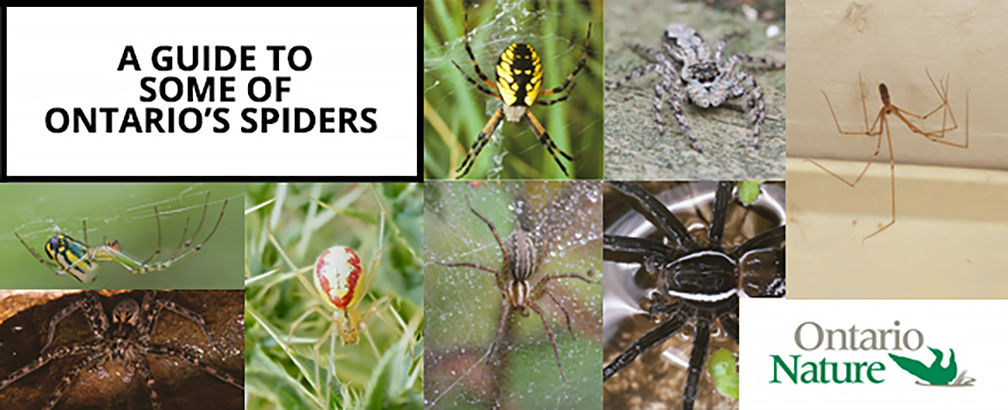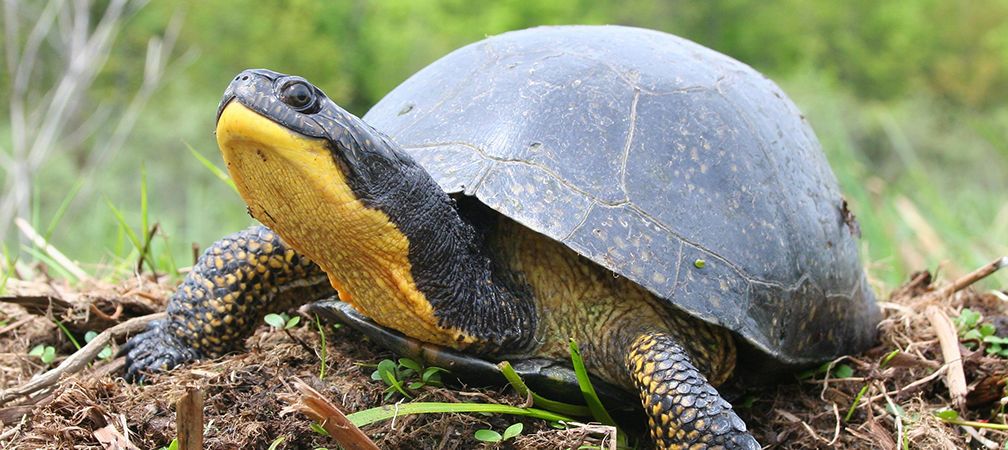Ontario Nature Blog
Receive email alerts about breaking conservation
and environmental news.
© Lora Denis
Studying under a willow © Garry Knight CC BY 2.0
The Autumn 2020 school semester has begun in the province of Ontario. Academic institutions are extending in-class and online learning opportunities and educators and students alike can greatly benefit from the free resources we have to offer.
Ontario Nature and ON Nature magazine are augmenting online learning by offering a diverse suite of popular online nature guides.

These four-page resources are geared to kids aged 10 to 12. Read about black bears, woodland caribou, invasive species, Ontario parks, the boreal forest, foxes, wetlands, racoons and so much more. Through these profiles you will connect with Ontario’s wild species and wild spaces, and learn about critical conservation issues.

Learn to identify more than 24 common species of Ontario’s beautiful butterflies and moths. Experts and beginners alike will find this popular guide informative and entertaining. Discover important host plants and habitats for your favourite species such monarch butterflies, swallowtail butterflies, tiger moths and luna moths.

Dragonflies and damselflies are two related and fascinating groups that make up the insect order Odonata. Dragonflies and damselflies are characterized by two pairs of wings, large compound eyes and narrow bodies. Covering 48 species, this popular online guide connects and inspires.

Learn about more than 50 species at risk that are found in northern Ontario. We are now in the midst of the largest mass extinction since the disappearance of the dinosaurs more than 65 million years ago. Habitat loss and degradation, climate change, invasive species, pollution and over-exploitation of natural resources are some of the factors driving the decline. This handy guide categorizes species into mammals, birds, reptiles, fish, plants and insects.

Just like interests in baking and gardening arose as a result of the pandemic lockdown, mushroom and forest food foraging are also increasing as people seek ways to spend more time outdoors. Northern Ontario’s forests, meadows and waters provide an incredible range of nutritious and delicious edible wild plants. Ontario Nature has prepared this foraging guide as an introduction to this local resource, and to encourage people to experience the wonders the natural world provides.

This guide is intended for the boreal forest of northern Ontario where foraging presents an alternative to harvesting lumber and the forest’s ability to absorb the impact of harvesting is greater. Forests and freshwater food systems – comprised of plants, animals, birds, fish, and fungi – are important sources of nutrition for many people in northern Ontario. They are also key indicators of healthy functioning forest ecosystems and food webs.

As the only flying mammals in the world, bats can make an impressive claim to fame. Eight species of these nocturnal creatures live in Ontario – five of which are hibernate in caves and mines and are being decimated by white-nose syndrome. Agile and predatory, bats are capable of extremely sophisticated bio-sonar. While not widely beloved, bats play a vital part of the ecosystem. Not to mention that by consuming myriad moths and other flying insects, bats help to protect us and agricultural fields from many pests.

Spiders live among us in almost every conceivable habitat. Their ecological role, one that benefits us, is as the ultimate predators of insects. They pursue this role with instinctive dedication. More than 800 species of spiders in Ontario, very few of which are dangerous to people, yet almost a third of Canadians are afraid of spiders. Learning about these creatures helps mitigate that fear.
Spiders play a key role in the food web and are an important food source for other animals including songbirds, fish and salamanders. In Ontario, the best time for observing spiders is from late spring to early fall.

Check out our comprehensive field guide about Ontario’s reptiles and amphibians including descriptions, habitat, biology, threats and trends, range maps, and status and protection. Reptiles and amphibians are experiencing global declines of 20 and 40 percent respectively. In Ontario, 75 percent of reptiles and 35 percent of amphibians are listed as nationally and provincially at risk.
Ontario Nature also has other available online learning opportunities such as how to Reduce Your Environmental Footprint, Resources and publications and a series of short videos called “Nature at Your Doorstep” to engage kids with nature-based activities and help parents adapt and support nature-based learning from home.
If you want to learn more about our work and opportunities to get involved please subscribe to Ontario Nature’s conservation news. Also, don’t forget to follow us on Twitter, Facebook and Instagram for more inspirational content on environmental education!

Gananoque Lake Nature Reserve © Smera Sukumar
Do you have any guides or tips for foraging in the Southwestern Ontario region? Specifically around London area?
Thanks,
Dave
Hi Dave,
One reason why we created a foraging guide for northern Ontario is because southern Ontario is extensively owned as private lands, the public lands that do remain are often damaged by human impacts and it is important to protect the natural landscape, wildlife and vegetation that exist in these small protected southern areas. However, if you or a friend has private land you would like to forage on, the plants listed in the northern foraging guide can also frequently be found in southern Ontario.
Noah